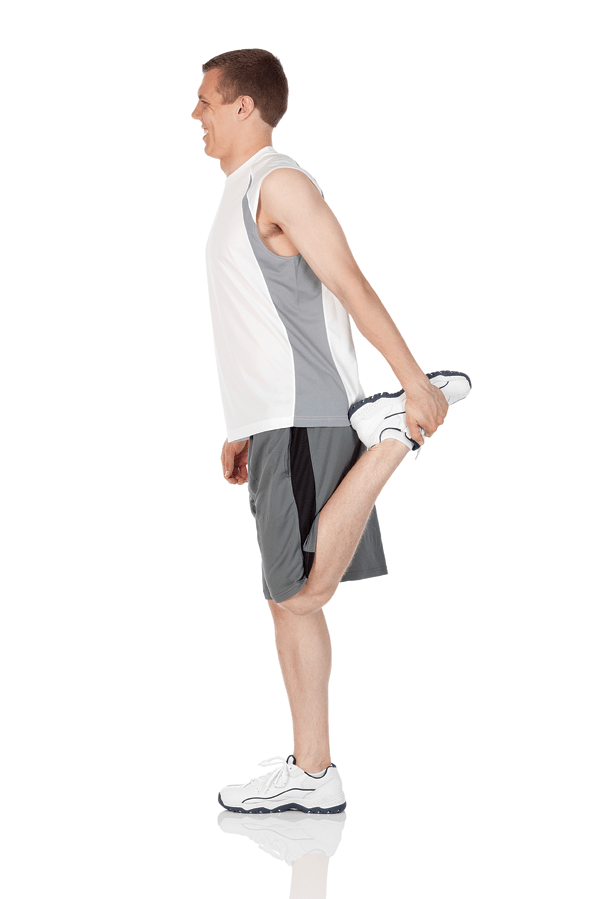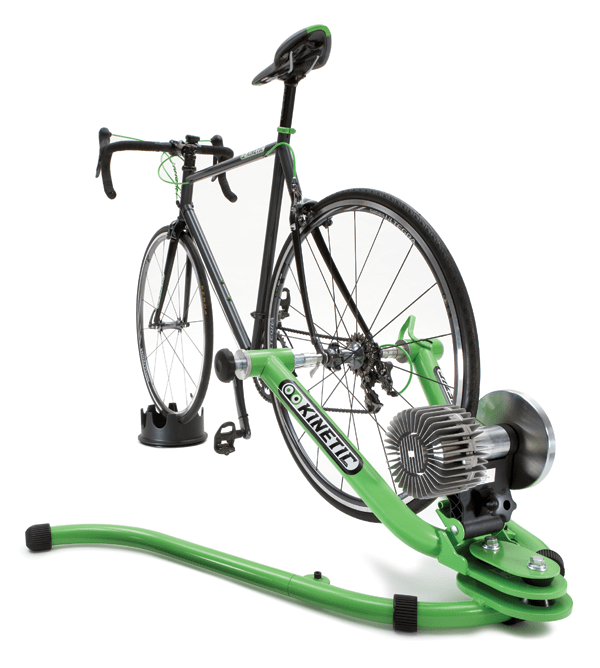As a coach, the most common feedback I get when things are not going according to plan is “I just don’t have enough time! No time for interval training, for stretching, for recovery rides, for gym sessions, for massages – I’m lucky if I can get on my bike three or four times a week!”
We can all sympathise with this – jobs, careers, spouses, other hobbies, family commitments, sleeping and surfing the web all take time away from riding. And just to rub salt into the wound, nearly everyone has at least one riding buddy who works part-time or is a millionaire, is single, has no hobbies and rides 20 hours a week.
So can a ‘normal’ (read non-obsessed) person not only ride well but actually improve with a minimum of training? The birth of our youngest son earlier in the year provided me with the perfect opportunity to conduct an experiment to provide some insight into that very question. I knew I’d be pressed for time, and that my timetable would be unpredictable at best for a number of months, so it was a golden opportunity.
The theory was to begin my period of ‘time-poor training’ in good shape, so as not to skew the data, to perform some baseline (or ‘before’) testing, train in an opportunistic and time-efficient manner for three months then perform the baseline tests again.
The interest in my experiment was sparked by a 2005 study by Burgomaster et al., then a follow-up study in 2006 by Dr Martin Gibala at McMaster University in Canada, as well as Tim Ferris’s full-body transformation using minimalistic training in his bestselling book, The 4-Hour Body.

Burgomaster’s study concluded that SIT (sprint intensive training, also often referred to as high intensity training) training could be effective in improving endurance performance. Initially, the subjects carried out a test, riding to exhaustion at 80% of their peak power output. Following this, they carried out a 14-day sprint interval training program which involved a mere 2.5 hours training in total, before completing a second test to exhaustion, also at 80% of peak power. Despite this tiny volume of training, which involved 30-second efforts well over 100% peak power (a completely different intensity to the test) the subjects’ average time to exhaustion increased from 26 minutes to 51 minutes – a 96% improvement!
Gibala’s 2006 test, conducted using two groups of racing cyclists – one group undertaking conventional endurance training, the other group only using SIT training – also demonstrated that short, sprint interval efforts could be as effective at improving aerobic performance as conventional endurance training involving moderate intensity cycling, even though the total volume of training amongst the ‘sprint’ group was more than 10 times lower that in the conventionally endurance-trained group over two weeks of training.
In The 4-Hour Body, Ferris ‘bio-hacked’ his metabolic system using a combination of dieting and HIT training to lose fat, gain lean muscle and improve his aerobic endurance.
In an effort to present unbiased data, and to avoid indulging in a self-fulfilling prophecy, I trained quite hard leading up to our hospital visit, putting in an average of 16 hours per week in the month prior to the big day so as to be in good shape leading into my experiment.
I then performed the following baseline tests – a one-minute, five-minute and 20-minute power test, and a 10-minute outdoor hill climb on a local road, all conducted on different days in a rested state.
BASELINE TEST RESULTS (76.6kg on day of 1st test)
1 MINUTE POWER 591 Watts
5 MINUTE POWER 351 Watts
20 MINUTE POWER 303 Watts
10 MINUTE HILL CLIMB 3.89km (distance travelled)
The power tests were all conducted indoors on a Wattbike, so conditions would be easy to simulate when it came to re-test time. The hill climb was done on my road bike on a calm day on dry roads, so the conditions would be able to be replicated reasonably well at a later date.
Little William arrived happy and healthy, and as expected my training regimen lost all consistency and discipline.
This inconsistency, though, proved to be incredibly useful when it came to weight management. Up until this point I had, like many cyclists, pretty much eaten whatever I felt like, and long rides were a subconscious free ticket to a cream bun or donut-scoffing frenzy. But as soon as I realised these long rides – or indeed any rides at all – were no longer a certainty, I paid much more attention to what I ate. A vanilla slice doesn’t taste quite as good when you know there’s a 50/50 chance you won’t be training for the next few days – it became a safer bet to eat lean and clean, and the training sessions rather than the bakery visits took on the status of being a secret pleasure bonus.
So that’s tip number 1 for the time-poor cyclist: EAT HEALTHY, EAT SMART, MANAGE YOUR PORTION SIZE.
Babies and children seem to force their parents to make lots of short trips – to the supermarket, to the doctor, to the hospital etc. These little journeys presented lots of opportunities to get in some incidental commuter riding, so wherever possible I rode. This often meant hooking the baby carriage onto the back of the single-speed and negotiating footpath traffic, but overall it was reasonably successful. Here’s something I learned quickly: it’s the easiest thing in the world to make excuses, and the most convenient excuse is “aarrgh, now I have to fix that flat/wash my bike/find my shoes/dry my kit…maybe I’ll drive this time.”
So here’s tip number 2 for the time-poor cyclist: AS SOON AS YOU RETURN FROM A RIDE, GET YOUR BIKE AND KIT PREPARED TO GO OUT AGAIN. BE READY TO RIDE WHENEVER YOU GET AN OPPORTUNITY.
Of course, ducking out for even a short ride is not always feasible. On the occasions when I needed to stay in the house but I had 20 minutes or so to myself I made the most of the theories of Burgomaster and Gibala and did some Sprint Intensity Training on the wind trainer. My favourite, and seemingly the most effective, was 8 X 30 seconds at maximum effort with a 90 second recovery between efforts – the entire session was over in less than 15 minutes and I definitely felt the effects! Other equally tough workouts were 8 X 20 seconds at maximum effort with a 40-second recovery, and a Tabata-style session of 10 x 20- second sprints at maximal effort with only a 10-second recovery. Whichever one you choose, your heart rate rockets skyward and your body and legs feel brutalised – very effective time-efficient training. The secret to making these sessions productive is, firstly, to go at absolutely full blast and secondly, to have them planned out properly – they may take less than a quarter of an hour, but that’s only if you know what you’re doing as you go in.
Tip number three for the time-poor cyclist: HAVE A LIST OF WORKOUTS TYPED UP AND TAPED TO THE WALL NEAR YOUR WIND TRAINER.
Tip number four: when it’s time to go hard, GO HARD!
Common wisdom dictates that a hard training session should be followed by a decent cool-down and some stretching. The time-poor cyclist doesn’t live in an ideal world though – I rarely found the time to follow the proper protocols immediately after training, but did my best to do them whenever I could fit them in. I found that sitting in front of the TV offered the best opportunities. Even five minutes of stretching, or two blocks of three or four minutes each, left me feeling a whole lot better and ready to ride or train again if the chance arose. It’s obviously impossible to prove a negative, but this constant stretching left me feeling stronger and less vulnerable to injury too.
Tip number 5 for the time-poor cyclist: STRETCH WHEN YOU CAN, WHEREVER YOU ARE.

The same goes for weight training and bodyweight exercises. In previous issues we have looked at the squat, leg press and front squat – these exercises all require equipment, so if you’re lucky enough to have a complete weight set at home then make the most of it! If not, then the next best thing is to do a series of Hindu squats, squat jumps and planks. Check out these YouTube clips to see how they’re done:
https://www.youtube.com/watch?v=4bwYws4–dI
https://www.youtube.com/watch?v=CVaEhXotL7M
https://www.youtube.com/watch?v=pSHjTRCQxIw
I tried to get in four sets of 50 Hindu squats per week, four sets of 20 squat jumps and three one-minute planks. It didn’t go exactly according to plan of course, but it was close enough – 50 Hindu squats only take about two minutes once you get the hang of them, you can get through 20 squat jumps in less than half a minute and a one-minute plank takes… a minute. These three simple exercises did wonders for my leg and core strength, and seemed to translate very well into cycling power and efficiency on those increasingly rare instances when I got on the bike.
Tip number six for the time-poor cyclist: STRENGTHEN YOUR CORE AND LEGS
Every now and then I managed my day just right, getting in a SIT session in the morning, followed by a quick stretch and some strength work, then found that the stars had aligned and I had another brief training opportunity in the afternoon. I always took it. Training twice a day is not always ideal, but my approach to it was that I might have two or three days coming up with no training at all, so why not? I didn’t go to the extent of doing two high intensity sessions in a day though – the second ride was either a 30-minute ride around the neighbourhood and/or adjoining bike paths, or it was a 20 to 30-minute wind trainer ride at 70-80% of Functional Threshold Power (or Threshold Heart Rate).
Tip number seven for the time-poor cyclist: DON’T BE SCARED TO TRAIN TWICE A DAY IF YOU GET THE CHANCE.

Three months flew by, and before I knew it the time had come to test my theory. I was hoping that I had come close to maintaining my fitness; I was certainly lighter than before, and felt at least as strong, but I knew that after so much time off the bike a 100km ride in the hills would be a real struggle. I was much more nervous than I thought I’d be – impartiality should be the cornerstone of any experiment, but I really wanted this to work! And here’s what happened:
FINAL TEST RESULTS (73.9kg on day of 1st test)
1 MINUTE POWER 606 Watts
5 MINUTE POWER 366 Watts
20 MINUTE POWER 297 Watts
10 MINUTE HILL CLIMB 4.11km (distance travelled)
So of the four tests conducted, I managed an improvement in three, and a performance decrease of only 2% in the fourth. This made pretty good sense too – none of the training sessions I’d done for the whole three-month period came even close to 20 minutes of hard riding, so it was little wonder I’d dropped off a bit. The hill climb improvement could be partially attributed to being 2.7kg lighter, but the one-minute and five-minute tests were absolute improvements with no variables. Not bad, when you consider the biggest training week I had during those three months consisted of only three hours 12 minutes on the bike – the equivalent of less than 100km.
If high intensity training is so great, why isn’t everyone doing it? Well, to some extent they are. More than ever, ProTour teams (and athletes and teams from other sports) are incorporating HIT training into their programs. The days of professional riders covering 1000km week in, week out are long gone. The concept of polarised training has taken hold in a big way – even at the very top level, easy rides are really, really easy, and hard training is incredibly hard. There is a trap in all endurance sports of doing your fast work too slow, and your slow work too fast, and the inevitable result is mediocrity – you get really good at going ‘sort of hard’.
HIT training also teaches you to suffer – there are no easy sessions, no freewheeling. Every pedal stroke has a purpose, and that purpose is to get stronger and faster, to push out more watts for longer. Your mental strength increases along with your physical improvement, and pain doesn’t scare you the way it used to.
The flipside is that HIT training is not much fun. Smashing out a solo 15-minute session that turns your legs to jelly and your lungs into a smouldering wasteland is not nearly as entertaining as a four-hour cruise with your mates followed by a bakery conference and some good-natured sledging. HIT training is not very social – even when you do a session with a friend, you can’t talk and there’s no scenery to admire. It’s all business.
If you set your mind to it, it’s definitely realistic to maintain or even improve your cycling fitness when you have very little time to train. It takes discipline and plenty of planning, but it can be done. You need to watch your calorie intake, and train whenever the opportunity arises.
I think, though, that a three-month stint is about as long as it would work effectively. The focus and attention to detail, and being ready to train at a moment’s notice, are physically and mentally taxing. The lack of long mileage starts to take its toll, so I would recommend if you’re planning to try this type of training (or circumstances are forcing you into it!) that you build a strong aerobic base beforehand by putting in plenty of long steady rides with your friends. Enjoy and appreciate long social rides in all sorts of weather and conditions surrounded by your mates before you leave, and tell them that you’ll be back soon.
